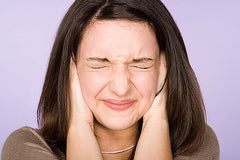 Researchers from the Washington University School of Medicine in St. Louis, Missouri have examined the specific challenges facing individuals with asymmetric hearing loss, and the role of hearing aids.
Researchers from the Washington University School of Medicine in St. Louis, Missouri have examined the specific challenges facing individuals with asymmetric hearing loss, and the role of hearing aids.
Hearing Loss and Hearing Aid Prescriptions
Asymmetric hearing is a difference in each ear’s ability to hear sounds, often caused by exposure of one ear to loud noises. Scientists from Washington University have received a 5-year, $3 million grant from the National Institute on Deafness and Other Communication Disorders to study asymmetric hearing loss in both children and adults. The Washington University project is headed by Professor Jill B. Firszt, PhD, an audiologist and director of the Cochlear Implant Program at the School of Medicine. The hearing loss studies began in 2008, and the patients examined were individuals who had asymmetric hearing loss leading to deafness in one ear and differing levels of hearing capability in the other ear. People with asymmetric hearing loss tend to have a harder time communicating, and it is especially difficult to assign asymmetric hearing loss patients with a proper hearing aid prescription.
Alternating Hearing Aids
Subjects with a regular hearing in one ear and deafness in the other ear reported having hearing impairments that were just as debilitating as individuals with deafness in one ear and a hearing aid or cochlear implant in the other. The hearing capability in a single ear did not guarantee that a person’s overall listening comprehension was better or worse. The reason why the brain is so effective in distinguishing sounds is that it uses the difference in intensity and time between noises heard by the left and right ears to filter important sounds from background noise. A common problem accompanying asymmetric hearing loss is a lack of ability to separate sounds from background noise. Asymmetric hearing can make it difficult to pinpoint and focus on a person’s voice, as it often gets mixed in with noisy environments like bars and indoor parties. People with asymmetric hearing loss also have difficulty identifying the position of an object making noise relative to them, which can be particularly dangerous when in traffic. Professor Firszt and her team are attempting to use neuroimaging to discover the neurological changes that may or may not occur in an individual accompanying asymmetric hearing loss. Her research also includes 3D analysis of a patient’s cochlea after cochlear implant surgery. Patients exhibited better performance when a cochlear implant was applied to the deaf ear and a hearing aid was applied to the better functioning ear. However, adults with asymmetric hearing loss spanning from childhood, at a period when they didn’t yet know how to speak, exhibited less of an improvement compared to adults with relatively recent hearing loss. Professor Firszt and her team are attempting to pinpoint more precise critical time periods for improving hearing function and assigning hearing aids. These findings enforce how important it is to have early hearing examinations and prescriptions for children, as well as the need to fit specific hearing aid devices for each ear.




